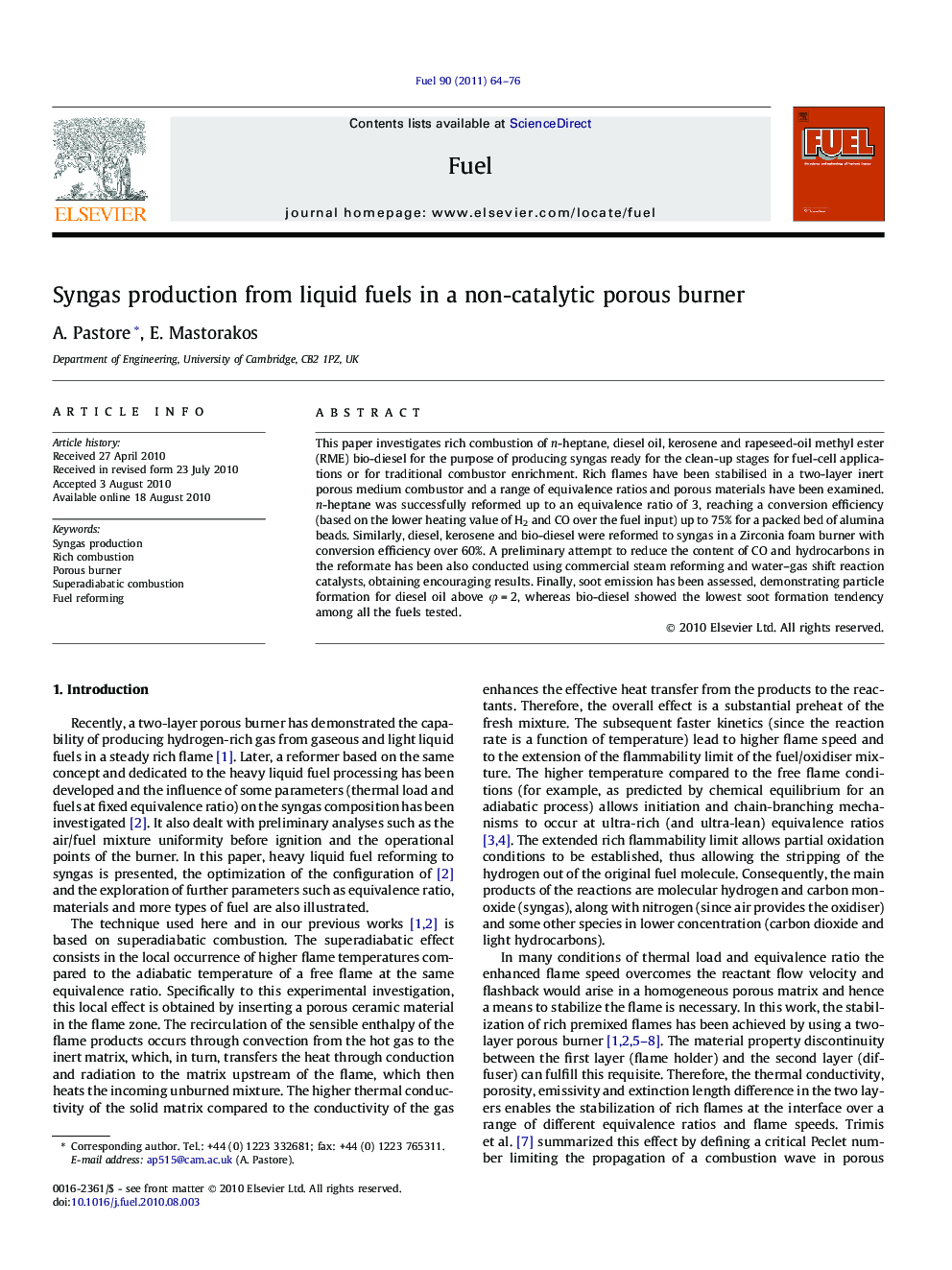| Article ID | Journal | Published Year | Pages | File Type |
|---|---|---|---|---|
| 206937 | Fuel | 2011 | 13 Pages |
This paper investigates rich combustion of n-heptane, diesel oil, kerosene and rapeseed-oil methyl ester (RME) bio-diesel for the purpose of producing syngas ready for the clean-up stages for fuel-cell applications or for traditional combustor enrichment. Rich flames have been stabilised in a two-layer inert porous medium combustor and a range of equivalence ratios and porous materials have been examined. n-heptane was successfully reformed up to an equivalence ratio of 3, reaching a conversion efficiency (based on the lower heating value of H2 and CO over the fuel input) up to 75% for a packed bed of alumina beads. Similarly, diesel, kerosene and bio-diesel were reformed to syngas in a Zirconia foam burner with conversion efficiency over 60%. A preliminary attempt to reduce the content of CO and hydrocarbons in the reformate has been also conducted using commercial steam reforming and water–gas shift reaction catalysts, obtaining encouraging results. Finally, soot emission has been assessed, demonstrating particle formation for diesel oil above φ = 2, whereas bio-diesel showed the lowest soot formation tendency among all the fuels tested.
